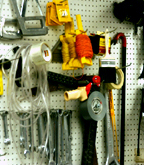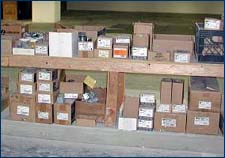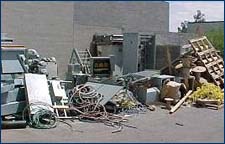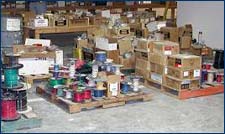Solutions for Electrical Contractors eTool
Materials Handling » Staging & Housekeeping

Everybody benefits when employers encourage proper staging and housekeeping practices; productivity rises, quality improves, profits increase, and the risk of injury is reduced. Employees can spend less time moving materials and more time performing skilled tasks.


Potential Hazard
-
Poorly-planned staging may result in employees lifting materials from awkward locations or carrying materials longer than necessary.
Possible Solutions
-
Ensure that materials are off the floor and are placed on stands, racks, or other devices (Figure 1) that allow the materials to be in the power zone, minimizing the need to bend or reach to access materials.
-
Ensure that materials are staged within 25 to 50 feet of the point of use. This reduces walking distances, an element that affects risk factors, efficiency, and productivity.
-
Plan staging so that materials and equipment can be placed in a central location so employees have good access to materials.
- Preplan, in the bidding stage, the space and type of racking needed (Figure 2) to store conduit and spools of wire at a central location, allowing easy access and locating materials in the power zone.


Potential Hazard
-
Poor housekeeping (Figure 3) creates a disorderly workspace, which increases the risk of ergonomic and other injuries and decreases productivity.
Possible Solutions
-
Make housekeeping a priority by performing housekeeping tasks daily or more often if necessary.
-
Plan to create a work space that is easy to maintain (Figure 4).

